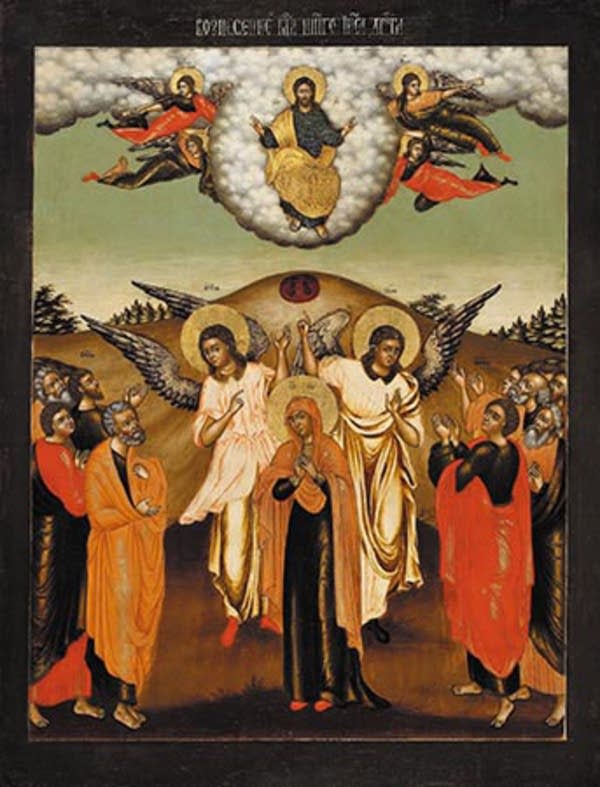Russian religous icons that survived a revolution
Go Deeper.
Create an account or log in to save stories.
Like this?
Thanks for liking this story! We have added it to a list of your favorite stories.

The city of Yaroslavl, Russia was once the country's wealthiest. Located in northwestern Russia, at the confluence of two major rivers, Yaroslavl was at the crossroads of many trade routes, and its merchants profited not only financially, but politically.

Museum of Russian Art Director Judi Dutcher said these wealthy merchants built over 40 stone churches in Yaroslavl in the beginning of the 17th century as an act of thanksgiving.
"So the greatest artists from across Russia came to Yaroslavl and for decades painted these lavish frescoes and ornate icons to decorate these monumental churches," Dutcher said.
Icons are typically small paintings of saints and other religious figures. Many of the icons painted in Yaroslavl were unusually large, some several feet tall. They seemed to glow with their own light, as the artists who created them made liberal use of gold and silver leaf.
Turn Up Your Support
MPR News helps you turn down the noise and build shared understanding. Turn up your support for this public resource and keep trusted journalism accessible to all.

Those created in the 17th century had a distinct style unique to Yaroslavl, using a distinct color palette, while those created in the 18th century showed influences from Italian and Dutch painters.
After the Bolshevik revolution of 1917, the government sought to eliminate religion, confiscating church property, and harassing believers. Dutcher said many of the churches were torn down, and religious icons were publicly burned. She said the exhibition, "Icons from Yaraslavl, Russia" is a group of 54 works that survived.
"They were saved by believers, they were saved in fact also by atheists in Russia, in Yaroslavl who recognized them for what they are," Dutcher said. "And so, set free from their liturgical setting, they became works of art."

Dutcher said it took a lot of work to convince the museum in Yaroslavl to loan the works, because they are so rare and fragile.
The exhibit runs through January 24, 2009 at the Museum of Russian Art. The museum is located in a renovated church, a fitting setting for these paintings.
Curator Masha Zavialova said while she herself is Russian Orthodox, she regards these paintings as works of art.
"Because in them art predominates," she said. "It dominates over the religious meaning and the historical meaning. They were made as objects of beauty to enjoy and admire."

Zavialova said before the Bolshevik Revolution religious icons were common in Russia.
"In the 19th century Russia, icons were everywhere, in every house and in every office," she said. "People took them when they traveled and every house had at least a dozen. The whole space of Russian life was protected and sanctified by these icons."
Zavialova said icons have their own complex symbology. Meaning is given to every little detail, from the position of a figure's hands, to the landscape around them. She said in many churches a wall of icons would help a visitor to learn which holidays the church celebrated, and what saint the church was named after.

Zavialova said icons are used as objects of meditation, to help the observer make a connection to the divine.
"There is a little bit of a Buddhist thing around icons," she said. "You meditate on them. You don't look on them as objects that can be magic by themselves. They're just helpers, basically."
Zavialova said when religion was condemned by the government, many families made more practical use of the spiritual helpers. She remembers hearing of one family who converted one of their icons into a lid for a bucket used to keep pickles.
However, in the 1940s Joseph Stalin restored the Russian Orthodox Church, and so today those icons which survived are seen not just as works of art, but as holy relics as well.




